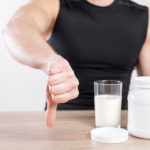By Bonnie Jenkins, Advanced Natural Medicine
Bladder problems got you down?
Have you ever laughed so hard you peed? Losing control of your bladder is embarrassing, uncomfortable, and, well, wet. It’s also surprisingly common. In fact, incontinence affects 10 to 30 percent of women 64 and younger, says the National Women’s Health Resource Center.
Even if your bladder is behaving now, it may betray you later. About 25 percent of women will experience involuntary urinary leakage and bladder problems at some point in their lives. Luckily, those little accidents when you cough, sneeze, laugh, or exercise are problems you can solve and even prevent.
Anatomy Class
Bladder Problems and Incontinence can make you feel older than you are. The reason is that many women think leaking is something that just happens to very old women. Not true! Incontinence isn’t a sign of aging – and it isn’t inevitable.
What is true is that older women have bladder problems for different reasons than younger women. For instance, arthritis can make it hard for an older woman to make it to the bathroom in time. Older women are also more likely to take prescription drugs, and some of these – especially some heart medications – can cause excessive urine production that overwhelms the bladder’s capacity.
Younger women – those in their 30s and 40s – have bladder problems because of stress incontinence and urge incontinence. Stress incontinence often happens when the pelvic floor muscles are weakened or damaged. This can happen because of childbirth, excessive weight gain, or decreased hormone production (think peri-menopause or menopause). In stress incontinence, the bladder and urethra sag, and the sphincter muscle can’t completely close – so any abdominal pressure, such as a laugh, a sneeze, or lifting a heavy object, can trigger a leak.
Urge incontinence, on the other hand, can be caused by urinary-tract infections or inflammation of the bladder. Irritated or overactive bladder muscles contract uncontrollably, making a woman feel like she needs to urinate now!
MD Exposes the Hidden Danger to Your Eyes

When your eyesight starts to fail, it's a real problem. Suddenly you can't go to the grocery store... you can't get to the doctor if you have an emergency... you can't meet your friends for dinner…
Your "regular" doctor doesn't have time to keep up with the latest research. And the same goes for eye doctors. They go to school to learn how to fit you for glasses and contacts, but have no way of preventing the damage and loss of eyesight that threatens your freedom and independence.
Let me show you something that explains a LOT about how your eyes work.
In my FREE Special Report, I'll show you a HUGE, untapped resource for your eyes that safely and naturally restores clear, effortless eyesight.
Click here to get started...
One other type of incontinence or bladder problem that can affect a woman, no matter what her age. Overflow incontinence occurs when a woman doesn’t feel the urge to go, so the bladder fills to the brim and causes so much pressure that the excess urine spills out. Diabetes is one of the most common causes of this type of bladder leakage. But women who are in the habit of holding their urine for six or more hours at a time can damage their bladder muscles and experience this type of incontinence.
Accident Insurance
While some types of incontinence need surgical intervention to close the floodgates, there are some things you can do to minimize accidents:
Monitor your fluids. Too much water overloads the kidneys, making you have to go all the time. Take your ideal body weight and cut it in half. This number represents the total ounces of fluids you should drink throughout a day.
Plan ahead. If you’re leaking during exercise or sex, empty your bladder before you begin either activity. You may even want to insert a tampon before strenuous exercise to support the urethra.
Time your bathroom breaks. “Timed voiding” can help women who have a constant urge to pee. If you normally hit the restroom every 15 minutes, aim instead for 20-minute intervals. Stretch the time by five minutes each week. In six to eight months, you’ll be able to wait two to three hours between bathroom breaks.
Lose weight. A study in The New England Journal of Medicine found that women who lost just 8 percent of their body weight reduced accidents by 47 percent. At the end of six months, those who had lost an average of three pounds each experienced a 28 percent decrease in their number of weekly incontinence episodes. But, those who lost an average of 17 pounds achieved a reduction of at least 70 percent of total stress and urge incontinence episodes each week compared to the control group. These same women also reported a lower volume of urine leaked and, overall, less of a problem with incontinence at six months, compared to the controls.
Butt out. Women who smoke are 2.5 times more likely to develop incontinence than women who don’t light up. Smoking irritates the bladder muscles, so they contract more often and cause leaks.
Keep a food diary. Food allergies can cause incontinence, and certain foods may irritate your bladder. Frequent culprits include artificial sweeteners, alcohol, caffeine, carbonated beverages, corn syrup, citrus fruits, dairy products, spicy foods, refined sugar, tomatoes, and vinegar. Recording what you eat will help you find patterns that trigger an urgency to urinate.
Exercise Better Control
You may leak when you work out, but there’s one type of exercise that can help stem the flow and reduce your bladder problems. Often used as a way to boost sexual satisfaction, kegel exercises can also prevent and treat incontinence.
The World's Quickest Solution for Ending Prostate and Urinary Misery
This has recently been revealed to be one of the only real breakthroughs in prostate health.
The seeds of a strange fruit (sometimes called "Chinese Apples") hold powerful phytonutrients that are a revolution in prostate health.
In fact, UCLA and Veterans Administration research have now proved this to be true.
Not only that, but it may be the worlds quickest solution for ending prostate misery.
Simply stated, these phytonutrients represent a huge step beyond beta sitosterol, saw palmetto, and other phytosterols alone.
Simply click HERE if you want to have fast prostate relief...restful, uninterrupted sleep...no more constant "urges to go"...enhanced virility...and optimal prostate support for life.
The key to practicing kegels properly is to isolate the muscles that control urine flow. Insert a finger into the vagina and squeeze around it. You should feel tightness around your finger. The buttocks, abdomen, and thighs should all be relaxed.
Once you’ve identified the muscles used during kegels, try these two exercises:
• If cough- or sneeze-induced leaks are your problem, squeeze and release the muscles in one-second intervals, gradually working your way up to three sets of 10.
• If you feel fine in the morning, but can’t hold your urine later in the day, squeeze the muscles for 10 seconds and release for 10 seconds, gradually building to three sets of 10.
Done properly, no one will even be able to tell you’re doing your kegel exercises while you’re sitting or standing.
Helpful Drug Alternatives
T.V. commercials would have you believe that prescription drugs are the only way you can solve your bladder problems. Don’t believe it! Herbs can be especially effective in treating urinary incontinence. Toning herbs like horsetail can strengthen and restore the mucous membranes in the urinary tract and may prevent incontinence and bladder problems. Other beneficial herbs include buchu, marshmallow root, corn silk, plantain, and nettles. For the correct dosage to treat your specific type of incontinence, seek help from an herbalist or naturopathic doctor.
If your bladder problems stem from frequent urinary-tract infections, try taking a concentrated cranberry supplement. Research shows that cranberry prevents bacteria from sticking to the lining of the urinary tract, thus preventing infection.
Magnesium has also shown promise for reducing leakage problems. In one study at Louisiana State University, 60 women with urge incontinence were randomly assigned to receive 350 mg. of magnesium twice a day or a placebo. Twelve of 30 women in the magnesium group reported improvement in their bladder control after one month, compared with only five of 30 in the placebo group. Plus, compared with the placebo group, the magnesium group experienced significantly fewer episodes of urge incontinence, urinated less frequently and awakened fewer times at night to pee. While no one has pinpointed exactly how magnesium relieves urge incontinence, this mineral does prevent muscle spasms, so it may have a direct effect on bladder muscles.
One Last Thing …
Call it back to the future, but post-menopausal women may want to keep a box of tampons on hand. Inserting a tampon in your vagina can help support a sagging bladder, holding it up in a more favorable position to control urination.
Just make sure you choose a “regular” instead of a “super” tampon, since toxic shock syndrome is still a very real threat to tampon users. For the safest tampon, look for one in your local health food store that is made from organic cotton that hasn’t been bleached. And always remove the tampon before going to bed at night. Hopefully that will take care of your bladder problems!
Research Brief …
As if vitamin D didn’t do enough already, Tufts University researchers have found that high blood levels of the “sunshine vitamin” reduces the risk of insulin resistance. The investigators studied 808 men and women enrolled in the Framingham Offspring Study, testing blood levels of vitamin D and the markers of insulin resistance, a risk factor for type 2 diabetes. They found that those with the lowest levels of D were much more likely to have markers for insulin resistance than those with the highest D levels, even after adjusting for other variables.
Of course, you don’t want to boost your D levels by lying out in the sun all day. But you can get the same health benefits by taking 1,000 to 1,500 IU of supplemental D daily. Just don’t assume this little pill will solve all of your insulin issues. Diet and exercise are still important for lasting health.
References:
Boschert S. Milk of Magnesia May Help Ease Urinary Urge Incontinence. Family Practice News. 2003;33:46.
Bump RC, et al. Cigarette smoking and urinary incontinence in women. American Journal of Obstetrics and Gynecology. 1992;167:1213-1218.
Liu E, et al. Plasma 25-Hydroxyvitamin D Is Associated with Markers of the Insulin Resistant Phenotype in Nondiabetic Adults. Journal of Nutrition. 2009;139:329-334. Mishra GD, et al. Body weight through adult life and risk of urinary incontinence in middle-aged women: results from a British prospective cohort. International Journal of Obesity. 2008;32:1415-1422.
Subak LL, et al. Weight loss to treat urinary incontinence in overweight and obese women. New England Journal of Medicine. 2009;360:481-490.






